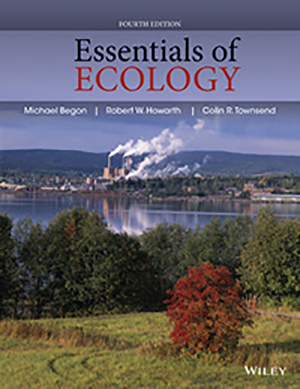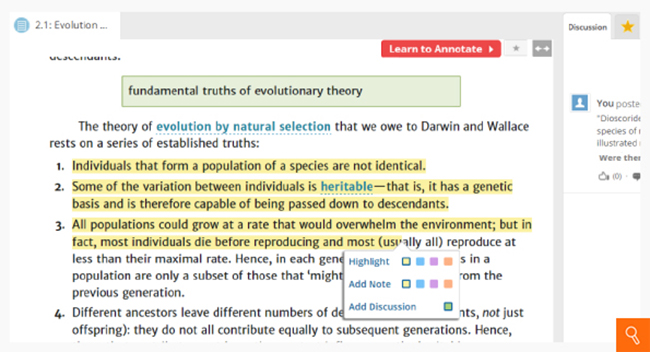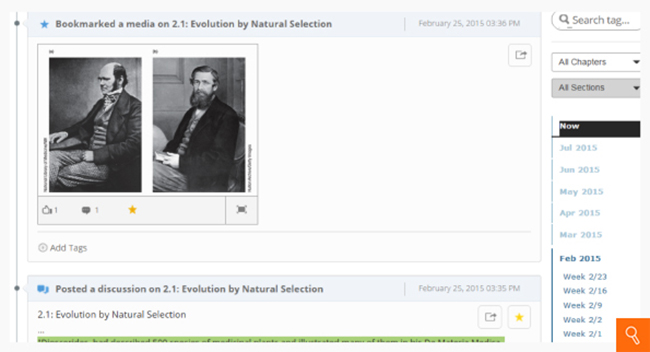
Essentials of Ecology, 4th Edition
By Michael Begon, Robert W. Howarth, Colin R. Townsend
Research shows that learning improves when students think or talk about new concepts. WileyPLUS Learning Space for Essentials of Ecology gives students the tools and confidence to collaborate with each other and participate more in class.
Schedule a Demo Sign Up for a Test Drive Adopt WileyPLUSWant to learn more about WileyPLUS? Click Here

Students can customize content according to study preferences
Using the MyNotes feature in the dynamic e-textbook, students can highlight passages of content and create their own study guide.

Students can share ideas and ask questions
Learning experts have shown greater gains in outcomes and improved retention when learners are able to read, visualize, interact with, discuss, and write about content. Using the Course Stream, students will ask more questions, share more insights, and see how their participation leads to progress.
- Answers to End-Of-Chapter Problems
- Image Gallery Use this digital repository of images displayed throughout the textbook to enliven your PowerPoint slides and interact with the reading assignments in the classroom.
- Lecture PowerPoint Presentations Our PowerPoint presentations contain a combination of key concepts allowing you to illustrate important topics with images, figures, and problems from the textbook.
- Test Bank Test your students’ comprehension with this digital collection of fill-in-the-blank, multiple-choice, true/false, and free-response questions.
- Wiley Student Companion Site
- Glossary
- A comprehensive list of key terms and definitions from throughout the text.
- Practice Quizzes These quizzes give students a way to test themselves on course material before exams. Each chapter exam contains fill in the blank, application, and multiple choice questions that provide immediate feedback with the correct answer.
Instructor Resources
Student Resources
Part I Introduction
1 Ecology and how to do it
2 Ecology’s evolutionary backdrop
Part II Conditions and Resources
3 Physical conditions and the availability of resources
4 Climate and the world’s biomes
Part III Individuals and Populations, Communities and Ecosystems
5 Birth, death and movement
6 Interspecific competition
7 Predation, grazing and disease
8 Molecular and evolutionary ecology
Part IV Communities and Ecosystems
9 From populations to communities
10 Patterns in species richness
11 The flux of energy and matter through ecosystems
Part V Applied Issues in Ecology
12 Global biogeochemical cycles and their alteration by humans
13 Conservation ecology
14 The ecology of human population growth, disease, and food supply

